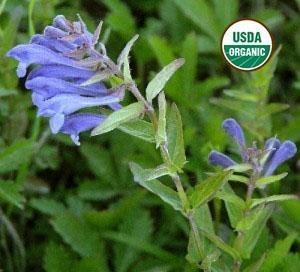BioComplete Skullcap Leaves
BioComplete Skullcap Leaves
Couldn't load pickup availability
Scutellaria lateriflora, scutellaria, scullcap, scute, blue skullcap, mad-dog skullcap, and madweed.
Skullcap is an herbaceous perennial mint with ridged leaves and tiny flowers that can range in color from purple and blue to pink and white. The two-lobed flowers resemble the military helmets worn by early European settlers‚ hence the herb's name. A hearty plant, it grows 1 to 4 feet (25 cm to 1 m) high, thriving in the woods and swamplands of eastern North America. Skullcap has been traditionally used by North American indians as a nerve tonic and diuretic. It was highly valued by the Cherokee and other tribes as an Emmenagogue and female medicinal herb, sometimes used as a ceremonial plant to introduce young girls into womanhood. Settlers in the late 1700's promoted the herb's effectiveness as a cure for rabies, giving rise to one of its common names, mad dog weed. This claim was later discarded, and herbalists began to focus on the plant's considerable value as a sedative.
Not toxic in normal amounts, although overdoses of Skullcap tincture may cause confusion, giddiness, stupor, and seizures. Due to its use in expelling afterbirth, it should not be used by pregnant women. Skullcap cut with related species can be dangerous (for example, teucrium chamaedrys, a close relative of pink skullcap, can cause hepatitis and liver damage), so make certain you are getting authentic scutellaria.
This information has not been evaluated by the Food and Drug Administration. It is not intended to diagnose, treat, cure, or prevent any disease. These food products may be beneficial for supporting optimal health.
For educational purposes only.

-
Safe Payments
-
Fast Delivery
-
Easy Returns
-
24x7 Customer Support


